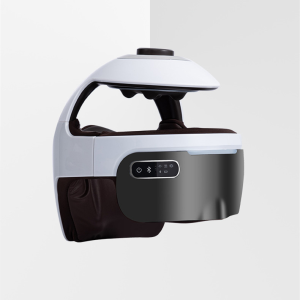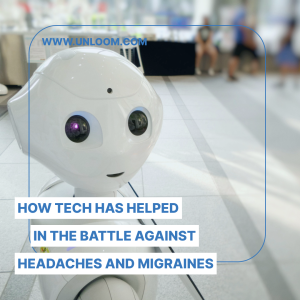I read several scientific papers and books on headaches and migraines. Here’s what I found:

Many people have been misusing the terms “headaches” and “migraines,” probably including you and me. That was before I became obsessed with headaches and migraines, reading numerous articles and books about these conditions. I’m about to share everything I’ve learned in the past few months. Stick around a bit longer, and you’ll learn the clear differences between headaches and migraines, their types, and how to identify their symptoms.
One of the most interesting things I discovered is that when people reported experiencing a migraine, they were often dealing with the so-called common headache. But what’s the difference between headaches and migraines?
Migraines or headaches?
To clear the air of all confusions, a migraine is simply a special type of headache. The confusion between headaches and migraines has been around for as long as we know. This confusion can largely be blamed on the choice of words, perhaps. Today, doctors have identified over 200 types of headaches, but there are only three main types:
-
- Tension-type headaches
-
- Migraines
-
- Cluster headaches
These are also arranged in order of their commonality, with tension headaches being the most common and cluster headaches the least common.
What are migraines?
Most times, when people experience severe headaches, they assume it’s a migraine. Sometimes they might be right, but often they are wrong. Let’s take a closer look at migraines first, as we can usually conclude that any pain with symptoms outside of those of migraines is most likely a tension headache.
Firstly, migraines can be classified into two types:
-
- Migraine with aura
-
- Migraine without aura
What is an aura?
An aura is a sensation felt less than an hour before a migraine attack, such as visual disturbances, a strange taste in the mouth, or smelling nonexistent scents. Auras are signs that indicate an upcoming migraine. Migraines with aura have these signs before the attack, while migraines without aura do not.
How do I know I have a migraine?
It might be tricky to distinguish between a migraine and a tension-type headache. However, migraines might generally be accompanied by the following symptoms:
-
- Extreme dislike for light (photophobia)
-
- Dislike for sound (phonophobia)
-
- Severe pain on one side of the head (unilateral)
-
- Typically lasts between 4-72 hours
-
- Movement of the head or bending down worsens the pain and discomfort
-
- Warning signs before the attack, like irritability, tiredness, craving for certain foods, and yawning. These signs might appear several hours or even days before the attacks. This stage is called the “Prodrome.”
-
- Migraines usually have a throbbing sensation
-
- Accompanied by nausea and vomiting
Most times (not always), symptoms of head pain outside of these described above would be considered a headache. In fact, to provide further clarity, the International Headache Society has set criteria for determining if a headache is a migraine or not.
Read the full blog post on how to distinguish a migraine-here.
What are Tension-type headaches?
Tension-type headaches are the most common type of headaches, usually triggered by stress linked to everyday life. In fact, many people refer to them generally as “headaches” – a confusion that I believe has been cleared up early in this article. They are called tension-type headaches because they usually result from tension in the muscles of the body, typically in the neck, shoulders, and head.
Generally, people believe that a tension-type headache that is extremely severe is a migraine. This is not true at all, as some tension-type headaches can be more painful than some migraines.
A headache is usually (but not always) any other pain in the head apart from a migraine. While migraines are usually associated with pains on one side of the head, headaches are usually a non-localized pain felt all around the head or sometimes like a tight band around the head.
What are cluster headaches?
This is the rarest type of the main/common types of headaches today. Cluster headaches can be so obtrusive and distressful. In fact, some people consider cluster headaches to be the most painful type of headaches. This headache type is far more common in men than in women, with a ratio of four to one. It is often accompanied by pain in the eye socket, redness of the eye, and even tearing. For this reason, cluster headaches can sometimes be misdiagnosed as sinusitis. In some cases, the headache is so serious that there are severe inflammations around the forehead and eye area. Cluster headaches can be so serious that the sufferer is unable to perform any form of activity whatsoever. One popular case of a cluster headache was seen with the popular American YouTuber IShowSpeed.

Causes of Headaches
Because the head is in control of everything in the human body and never takes a break, there are many ways in which it could go wrong. This is a non-exhaustive list of causes of headaches and migraines. This simply means that there are more causes of headaches than what is listed here. Also, there are always room for exceptions. The causes of headaches in one person might not be the same for another person, but I try to cover the general and common causes of headaches and migraines:
-
- Hangover
-
- Sleep disorders
-
- Stress
-
- Eye strain
-
- Medication misuse
-
- Hypertension
-
- Dental problems
-
- Ear infections
-
- Sinusitis
-
- Exertion
-
- Anxiety
-
- Noise pollution
-
- Light pollution
-
- Altitude change
How to treat headaches and migraines?
-
- 1. Orthodox medicine
-
- 2. Complementary medicine
-
- 3. Acupuncture
-
- 4. Acupressure
-
- 5. Cognitive-behavioral therapy
-
- 6. Relaxation therapy
-
- 7. Combination therapies
How to avoid headaches?
Non medicative preventions
If you are are susceptible to headaches, you should try to document the triggers that you are usually exposed to before you experience your headache or migraine. Once you are able to discover your triggers, effort should be made to reduce your exposure to these triggers. While this might not totally eliminate the occurrence of your headaches, this would most likely reduce the frequency. This method combined with a medication would be avery effective way to treat your headaches and migraines.
Some triggers of headaches that you can look out for:
-
- food like banana
-
- fasting
-
- sexual activities
-
- plane rides
-
- menstruation and ovulation
-
- Hereditary traits
-
- stress
-
- Excessive screen time
-
- Caffeine
-
- Alcohol
Medication prevention methods?
Along with other non-medicative prevention methods, it is best that you speak to a doctor especially if you have recurring headaches. Your doctor can then prescribe the best medications for the treatment and prevention of your headaches. Your doctor might prescribe drugs like beta blockers, calcium channel blockers, Nonsteroidal anti-inflammatory drugs (NSAIDs), ergots, etc.
These drugs groups might not be suitable for everyone, hence, it is important that you consult your doctor before using any preventive or curative medicaton for your headaches or migraines.
Physical Therapy
You can always help yourself to a nice massage to release the tension in your muscles. This can help relieve your headaches, especially tension-type headaches. This is always a good way to prevent headaches when you get signs that you might soon have a headache. Physical and massage therapy can also help you relax when you experience your headaches.
What’s your stress, headache and migraine management like?
Headaches are inevitable. Even though everybody wishes they had lives without headaches and migraines, it is still rare that you never experience any headaches whatsoever. It is important that you are adequately prepared for these times.
I personally recommend getting a stand-by massager like the Unloom head and eye massager.
Everybody needs this accessory at home but if you have chronic, recurrent headaches, this might be the single decision that might change your life.

This electronic massager is a great investment as it can come in handy in situations where you start experiencing signs of an upcoming headache or migraine (Aura). This could happen at the most inconvenient times for example in the midnight or very early in the morning.
Since most headaches and migraines are mostly linked to tension and stress, investing in a portable, electronic massager is a great investment!
Read more about how the Unloom head-eye massager works, it benefits and how to get one.



